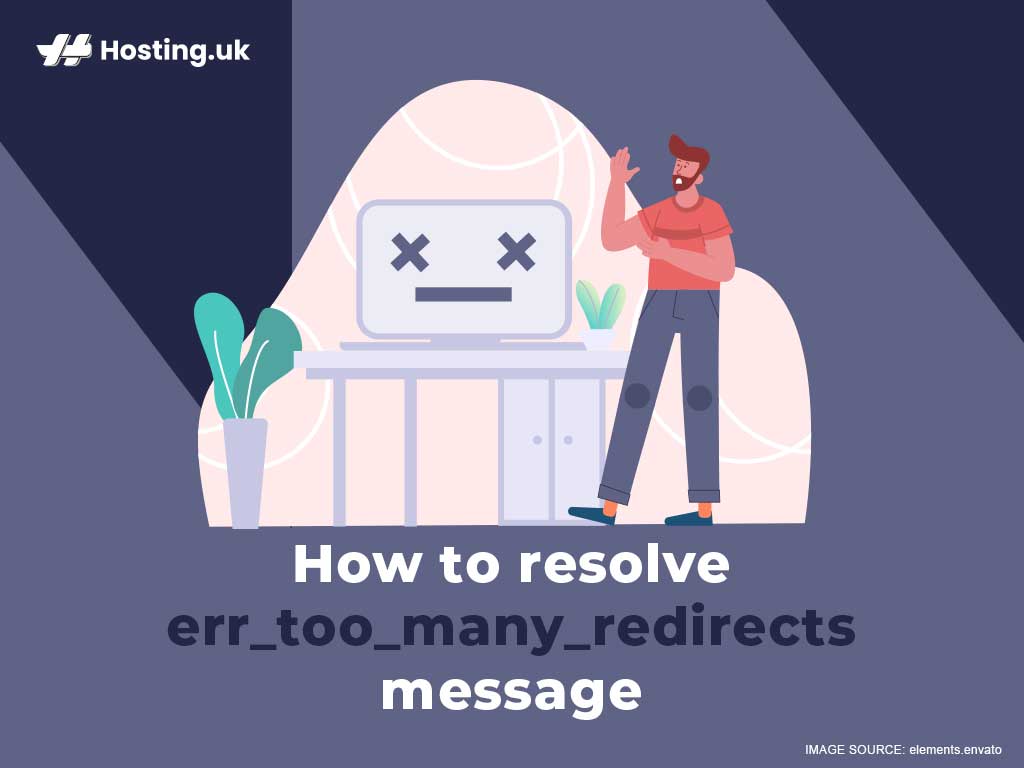Have you ever tried to load a website only to see the webpage Err_Too_Many_Redirects pop up on your device browser? Well, you are not alone. This issue generally occurs when you are forwarded from the original URL (that you enter in your browser) to a new one, however, your browser search falls into an infinite redirect loop. When your browser breaks the loop, you are then presented with the error message. Browsers often get stuck in a loop due to website hosting interruptions, server complications or user issues. This error message signals that your website or the website you are accessing is offline.
In other words, it is experiencing downtime, and this means a loss of potential clients or followers which is bad for your website or the target website.
Table of Contents
How to have Consistent Uptime
1. Using a Reliable Webhosting Platform
You may be wondering, “How can I ensure consistent website uptime and get notification of ‘Err_Too_Many_Redirects’?”
The answer is simple. Invest in a reliable website hosting platform, like Hosting.uk which monitors your website for you.
You can also benefit from:
- Easy-to-use Control Panel (cPanel), which is a web-based management application for your website account.
- A wide range of support for your assigned programming language. This means that if your electronic device uses, MariaDB, HTML, HTML5, Perl, Python, Ruby on Rails PHP, CSS, JavaScript or any other programming you can rest assured it is compatible with our platform.
- The flexibility that makes it easy for basic to complex website building according to the user’s specification without much effort. However, the result is professional and aesthetically pleasing.
- Cost-effective website hosting package plans that you can cancel at any time.
Apart from having a great website hosting platform, there are other ways to resolve an Err_Too_Many_Redirects message:
2. Enter the same website URL in another browser
The Err_Too_Many_Redirects error message may be as a result of a glitch in the software that manages your web browser. Using another browser will help you deduce if the issue is browser related or server related. If you don’t have another browser on your electronic device, then you may need to log on to the website at another time.
3. Clear your browser history
Browsers are system applications that are controlled by special computer languages called software. In doing a simple web search via your selected browser, more than one software is initiated at once. As such the high-speed communication among your electronic device, browser and the target website may cause a pile-up of data in your browser’s memory and this has the potential to disrupt future web searches.
Clearing your browser memory (history, cache, cookies, etc.) will clear the pile-up data and make space for you to begin new communication.
4. Check your browser extensions
Some browser extensions are designed to block users from assessing certain websites. To remove this blockage, all you need to do is disable the extension and you should be good to go.
5. Update your system date and time
Incorrect date and time on your electronic device may inhibit you from accessing websites that are date and time-sensitive. This will cause you to receive an Err_Too_Many_Redirects message. A simple date and time change may solve this issue within minutes.
Other Redirect Error Messages
Apart from Err_Too_Many_Redirects error messages, another set of error messages you may encounter are 301 and 302 redirect codes.
If you are familiar with moving your website from one web address to another, then you may have come across the 301 and 302 redirect codes. These are used to direct website users from one URL or webpage to the new one.
Though both codes are responsible for rerouting your web search, there are subtle variances between a 301 and 302 redirect. 301 redirect codes signals to you, the user, that the website you’ve entered into your browser has moved permanently to a new location/has a new web address. Whilst, the 302-redirect code specifies that the webpage has temporarily moved to a new location.
Website downtime is a serious matter for website owners because even the smallest amount of time offline can significantly affect your website traffic.
301 redirects allow your Search Engine Optimisation (SEO) link equity, worth and ranking to remain intact and transfer to the new URL that is indexed in search engines.
In contrast, a 302-redirect code SEO status is not generally transferred to the new location, since 302 redirect code signifies a temporary movement.
SEO Best Practices for Redirects
Redirecting one URL to another is actually a common practice. Whenever you are doing this, make sure that you observe best practices so that you can maintain SEO value.
There are several ways to do this. However, in general, it’s best that you use a 301 redirect for both users and search engines. When you serve a 301 it shows to both browsers and search engine bots that your page has been moved permanently.
Conclusion
It’s not a must that you know all about technical terms and notifications if you are a website owner. However, it will prevent you from wasting your time worrying or becoming annoyed since you are able to understand right away what to do and what not to do to get the best use out of your personal website or someone else’s website.
Technology has evolved over the centuries and website creation and management are easier for the less tech-savvy people among us but learning a few “techy” terms may lead to you becoming more creative online.
Building websites in today’s modern society isn’t all about ones and zeros, and website management doesn’t have to be a complicated task. It can be exciting and enlightening when you know and understand basic terms like webhosting, 301-and-302-redirect-codes and Err_Too_Many_Redirects.
Do you have more questions about how to resolve Error messages? Go ahead and ask them in the comments section below. We’ll be happy to answer them for you.
